I am using an IC (STM6600) which, among other functions that I need, is also capable of Undervoltage Monitoring. It works like this:
The IC monitors VCC in comparison to two thresholds, V_Low and V_High (which is just V_Low+V_Hysteresis).
When VCC < 3.10V (V_Low), then its status output = LOW (undervoltage condition)
When VCC > 3.30V (V_High), then its status output = HIGH (normal condition)
(Thus V_Hysteresis = 0.20V.)
The problem is:
- I'd like the status LOW condition at VCC < 3.45 V
- I'd like the status HIGH condition at VCC > 3.55 V
- (Thus, I'd like V_Hysteresis = 0.10V.)
Since I obviously can't change the IC's operation itself, I am therefore trying to instead find a way to add some voltage-scaling circuitry in between my original supply (V_battery) and VCC of this IC. What are some ways I can accomplish this?
Note: I considered a resistive divider as well as a diode-based drop, but I couldn't solve it with either of those because the necessity above is not a proportional scaling. One other way might be to use a low-power microcontroller w/ ADC in between, read the voltage, and PWM-output the mapped/scaled voltage. But I was wondering if there are simpler options.
